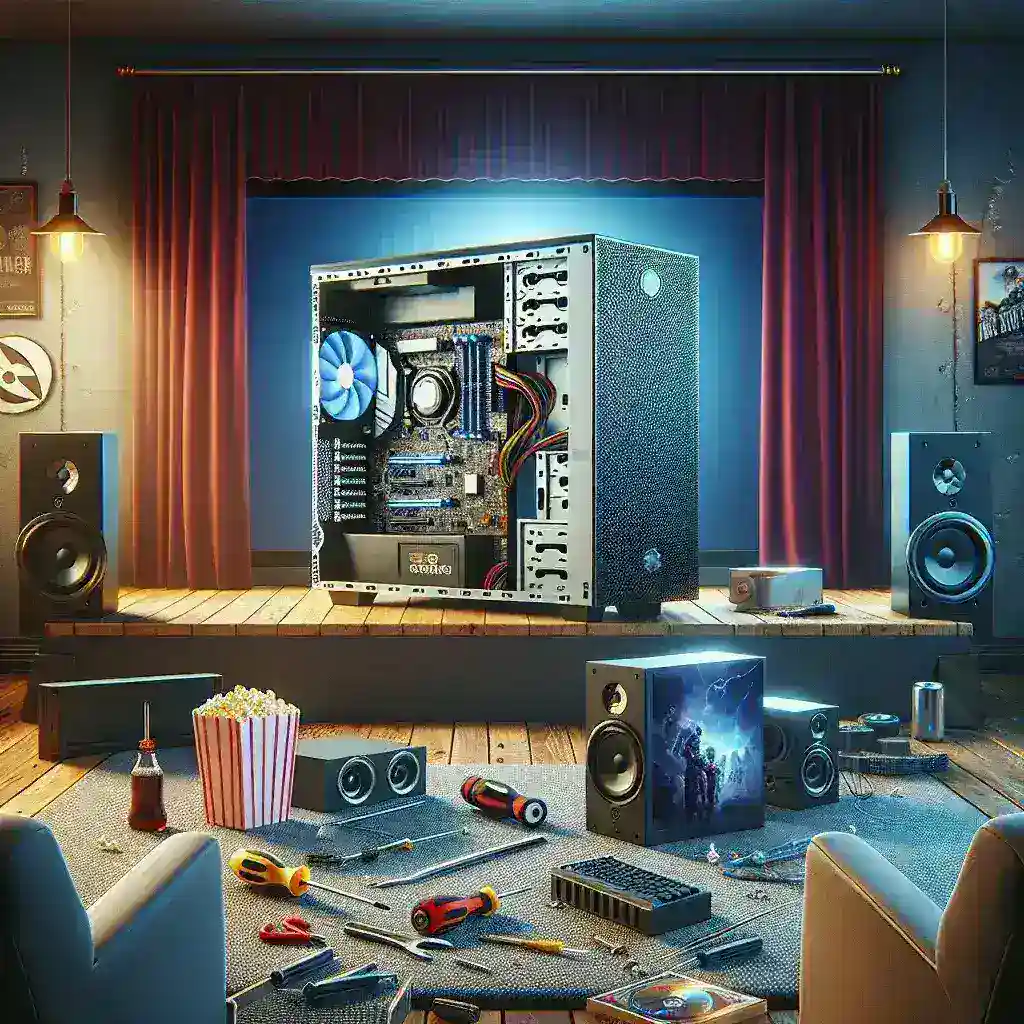
Introduction
In today's digital age, a Home Theater PC (HTPC) can significantly enhance your entertainment experience. Combining the functionalities of a traditional media player with the flexibility and power of a personal computer, an HTPC allows you to watch movies, stream content, play games, and much more—all from the comfort of your living room. This guide will walk you through the key steps to build a home theater PC for the ultimate entertainment experience.
Essential Components for Your Home Theater PC
1. CPU and Motherboard
Your HTPC's performance largely depends on the CPU and motherboard. Opt for a multi-core processor for seamless multitasking and a motherboard that supports the latest hardware interfaces and network capabilities.
2. GPU
A dedicated Graphics Processing Unit (GPU) is crucial for high-definition video playback and gaming. Look for GPUs that support 4K resolution and HDR for the best viewing experience.
3. Storage
Consider a combination of SSD and HDD for your storage needs. An SSD ensures fast boot and load times, while an HDD provides ample space for storing large files.
4. Memory (RAM)
8GB of RAM is the minimum requirement, but 16GB or more is recommended for efficient performance, especially when streaming high-definition content or multitasking.
5. Power Supply
Choose a reliable and efficient power supply unit (PSU) to ensure stable power delivery to all components. A PSU with a power rating of 450W or higher should be sufficient for most HTPC builds.
6. Case and Cooling
Pick a case that fits your living room's aesthetic and has good ventilation. Proper cooling mechanisms, including fans or liquid cooling systems, are essential to prevent overheating.
Setting Up Your Home Theater PC
1. Install the Operating System
Install a user-friendly operating system that supports media playback and streaming applications. Windows 10, for example, offers excellent compatibility and a wide range of media apps.
2. Media Center Software
Install media center software like Kodi or Plex to organize and playback your media files efficiently. These platforms provide a comprehensive interface to access all your media content in one place.
3. Configure Audio and Video
Ensure your HTPC is connected to your TV and sound system correctly. Use HDMI connections for high-quality audio and video output. Configure the audio settings for surround sound to get an immersive experience.
Benefits of a Home Theater PC
- Versatility: An HTPC serves multiple purposes, from streaming movies to playing games and browsing the internet.
- Customization: Build your HTPC to suit your specific needs and preferences, from hardware components to software configurations.
- Cost-Effective: Over time, an HTPC can be more economical compared to purchasing and maintaining multiple separate devices for similar functions.
- Convenience: Enjoy all your entertainment needs in one place, eliminating the need to switch between devices.
Conclusion
Building a home theater PC can transform your living room into a versatile entertainment hub. By carefully selecting the right components and setting up your HTPC correctly, you can enjoy an unparalleled entertainment experience tailored to your preferences. Start building your HTPC today and elevate your home entertainment to the next level.
Leave a Reply